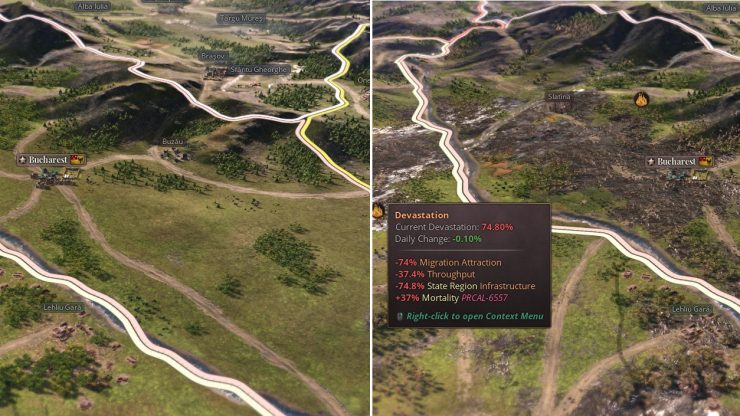The final Victoria 3 dev diary on warfare is out now, and it buttons up the series of posts about the grand strategy game’s new approach to international conflict with a look at the costs of war. There are a lot of them, it turns out, and they’re substantial – in fact, based on this diary, it seems like Victoria 3 will be taking war more seriously than any of its predecessors.
One of the design pillars for warfare in Victoria 3 is that war is costly. The developers have taken that seriously, it seems: Victoria 3 models the concept of total war by making it a fundamental shift to your nation’s economy. War places new demands on your population, your industrial base, and your trade network – there’s nothing it doesn’t have some impact on in the game.
Your Army Model will determine how a big part of this works. So far, there are four of these planned for Victoria 3, ranging from the ancient peasant levy model up through the standing regular army of trained, professional soldiers. Depending on the nation you lead and the circumstances in which you find yourself, any one of these might be the correct fit.
The diary takes us through the process of mobilising conscripts under mass conscription and peasant levy models. Conscription can only happen during wartime, or while your nation is actively involved in a diplomatic play. You’ll be able to activate conscripts in any or all of your states, where they’ll organise at a newly constructed conscription centre before forming battalions and marching off to a front where they’re needed.
But these conscripts don’t come out of nowhere – they’re your citizens, and conscripting them into military service pulls them out of whatever job they were doing before the war started. That means your industries will suffer short-term manpower shortages, and will need to replace lost workers.
Once more unto the breach, dear friends, once more! This week's Dev Diary is about the cost of war, and it is by no means inconsequential. Read all about it here: https://t.co/7n6ctkScjU pic.twitter.com/jPzcwpulzH
— Victoria 3 (@PDXVictoria) November 25, 2021
It might also mean that the factories you were relying on to supply your armies don’t have enough labor on hand to produce the goods those units will need. Further, the movement of troops to the frontline is constrained by the infrastructure available in the states they have to travel through to get there. All this means that you’ll need to think hard about which states you conscript from and how many battalions you want to raise.
Another big factor to consider is the fact that conscripted battalions, once mobilised, use twice the normal amount of resources. That makes them expensive to field, sure, but it also increases the demand on all the goods they use – which drives prices up even further. This in turn creates incentives for your neighbors to start selling you arms, since the prices on them will be radically inflated during wartime.
The diary also includes some work-in-progress visuals of how war will change the landscape itself. Areas that see lots of battles will eventually become devastated, and you’ll be able to see that on the map itself when you’re zoomed in.
Fortunately, wars don’t have to last forever, and Paradox says the next dev diary is going to discuss the way peace deals are made. The Victoria 3 release date is expected to be some time next year.

